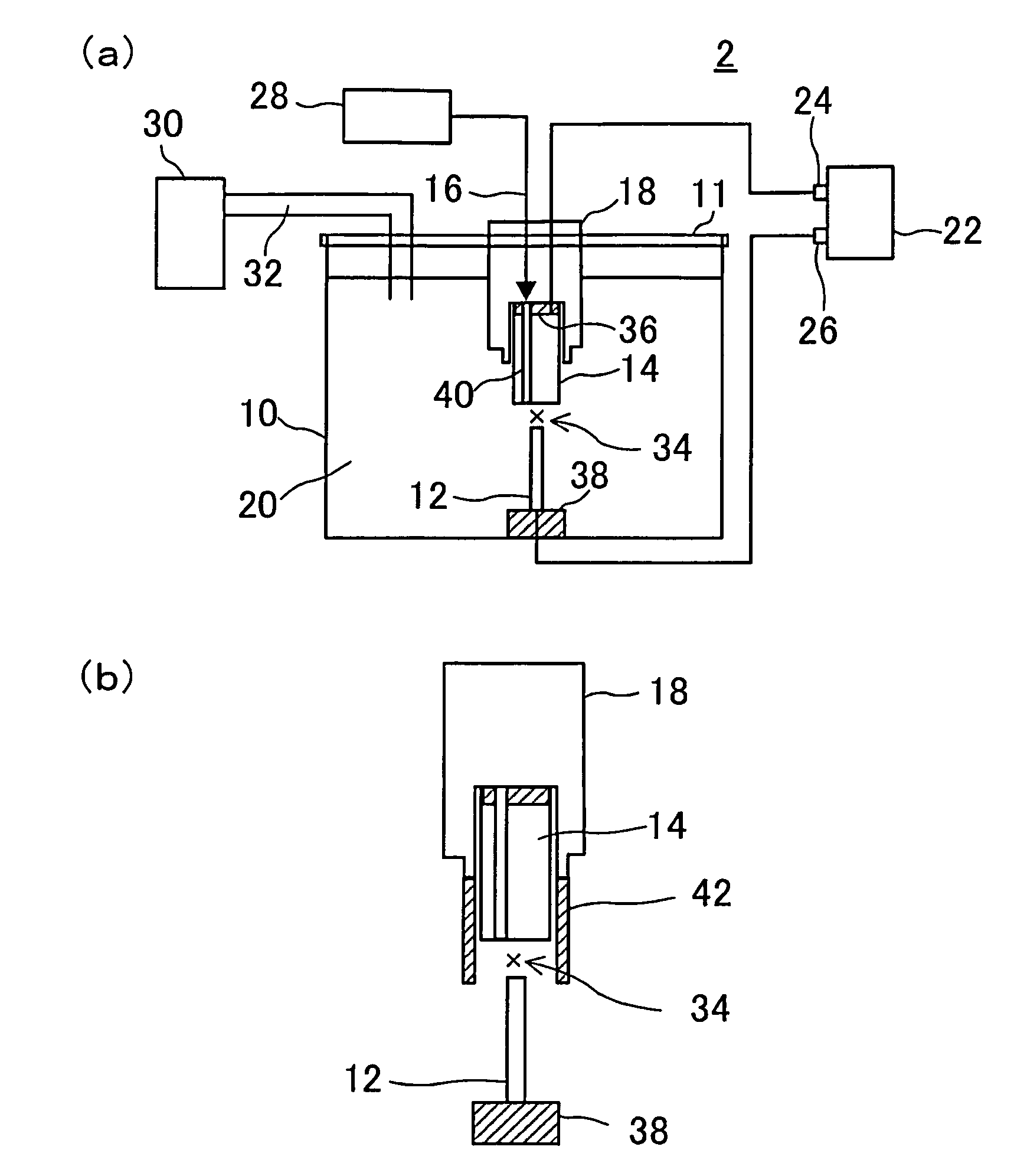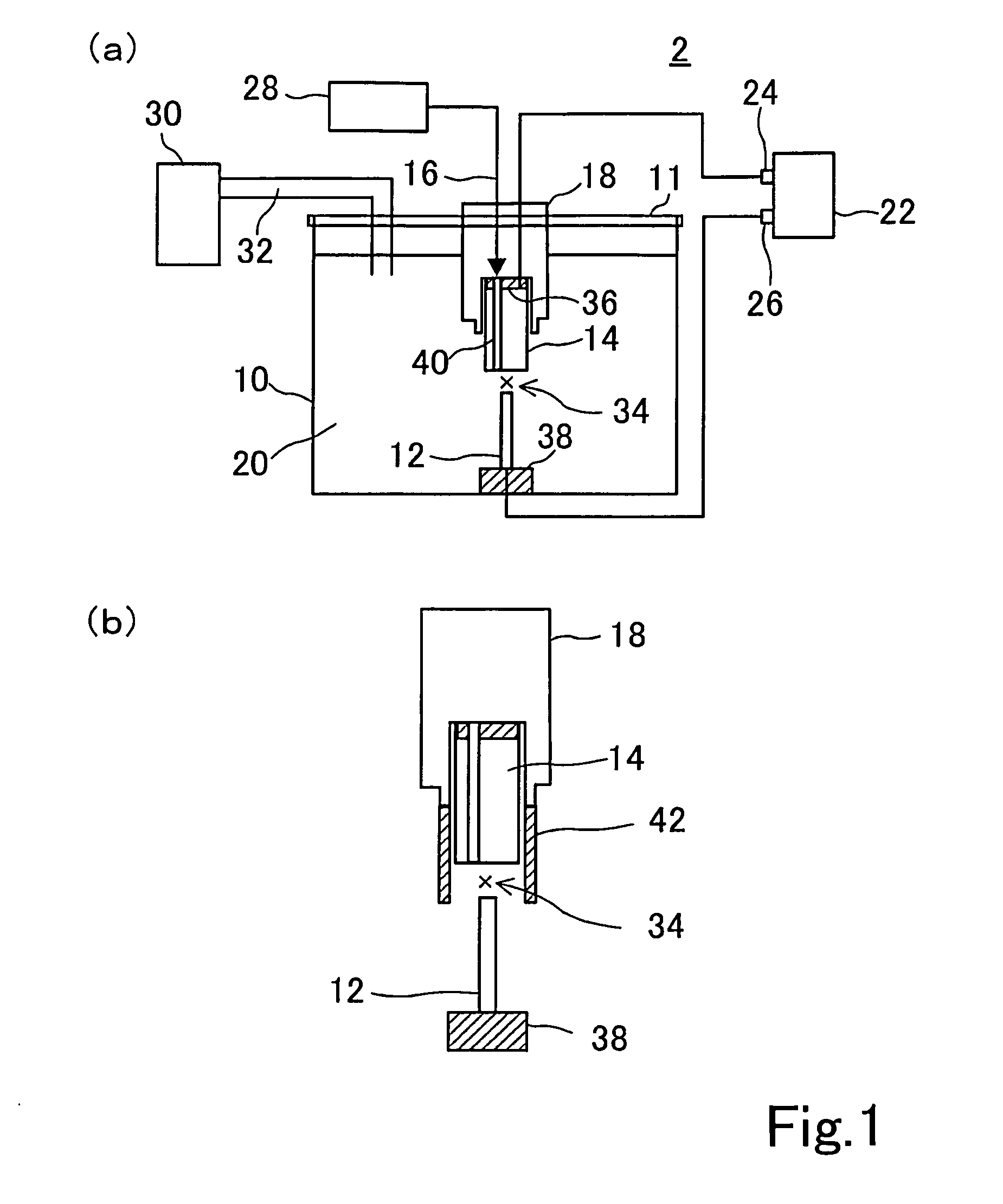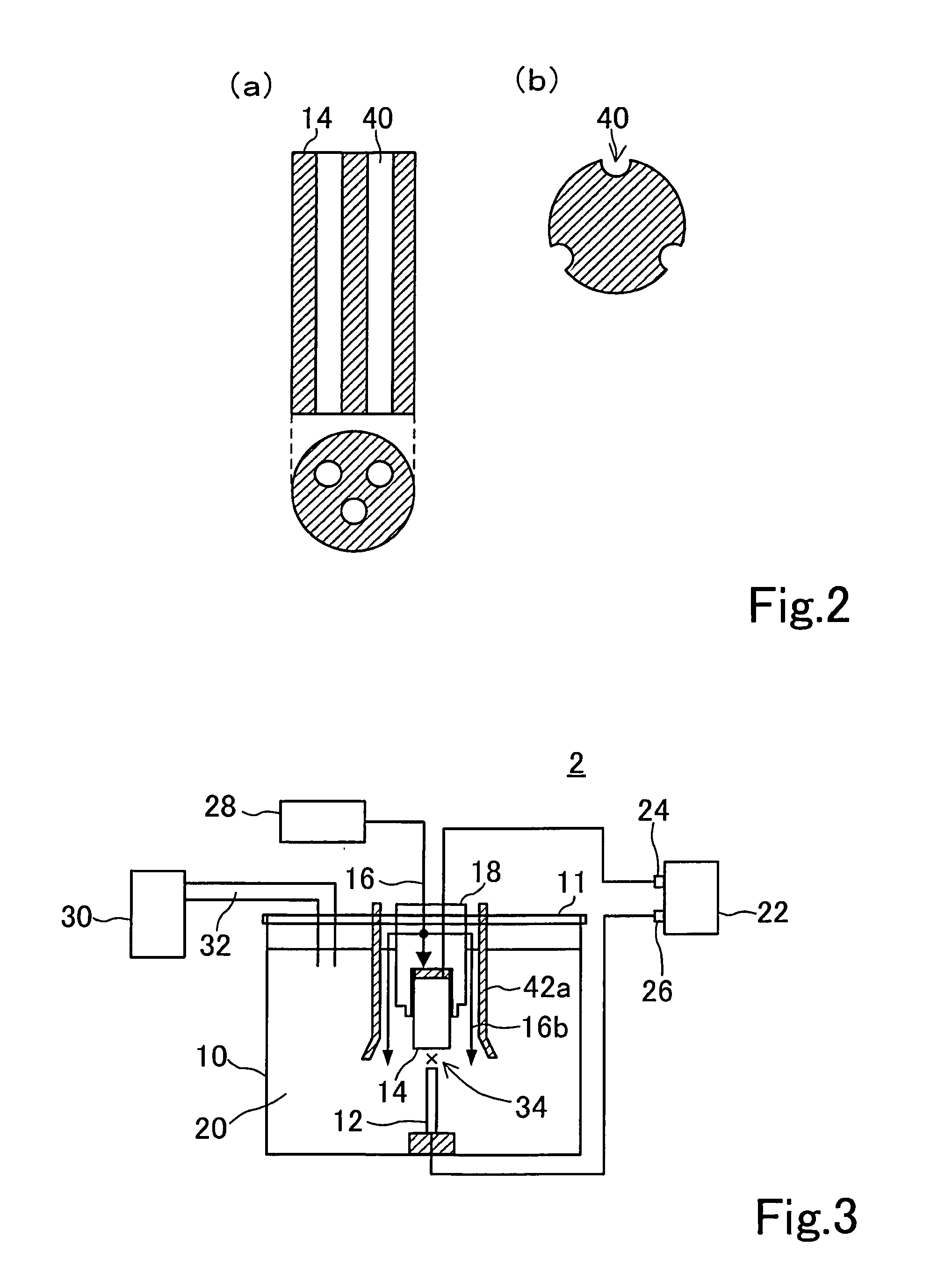Dense material including carbon nanohorns and use thereof
- Summary
- Abstract
- Description
- Claims
- Application Information
AI Technical Summary
Benefits of technology
Problems solved by technology
Method used
Image
Examples
first embodiment
[0183]The present teaching is described in detail below with reference to the embodiments. The present teaching, however, is not limited by the following embodiments. In the embodiments, production of carbon nanohorn by the production method of the present teaching is described.
second embodiment
[0184]The present embodiment is described as a favorable example of a device of FIGS. 1A and 1B. The graphite positive electrode and the negative electrode are disposed in the fluid bath with a water depth of about 30 cm so that the electrodes face each other in the vertical direction in relation to force of gravity at a distance of 1 mm from each other. The graphite positive electrode has a cylindrical shape with a diameter of 3 mm and a length of 100 mm and is obtained using 1.5 g of carbon rods with a carbon purity of 99.999%. The fluid bath is filled with 20 L of aqueous solution, and the fluid bath is then sealed with a lid. A DC voltage of 20 V, 60 A is applied to the graphite positive electrode and the negative electrode. Carbon particles are then synthesized by supplying nitrogen gas at at a set value (20 L / min to 25 L / min) to the introducing path of the negative electrode. At that time, a gap between the graphite anode and the cathode is adjusted by automatic control of a s...
third embodiment
[0187]In the present embodiment, a carbon nanomaterial was produced using a graphite anode in a size that is different from the first embodiment. The description of the same members and the same operations were omitted. In the present embodiment, as the graphite anode, a carbon rod having a diameter of 6.8 mm, a length of 100 mm, a cylindrical shape, and a carbon purity of 99.999% was used. As the cathode, a carbon rod, which has a diameter of 12.3 mm and in which a nitrogen gas introduction path was formed, was used. The graphite anode and the cathode was placed in a fluid bath so as to face each other at a distance of 1 mm, and the fluid bath was filled with purified water, and thereafter, a direct current at 140 A was applied under introduction of nitrogen gas (20 to 25 litters / minute) to generate a carbon nanomaterial. The generated carbon nanomaterial was separated by filtration. Thus, 3 to 4 times as much carbon nanohorns as that in the first embodiment were obtained.
[0188]As ...
PUM
| Property | Measurement | Unit |
|---|---|---|
| Temperature | aaaaa | aaaaa |
| Length | aaaaa | aaaaa |
| Fraction | aaaaa | aaaaa |
Abstract
Description
Claims
Application Information
 Login to View More
Login to View More - R&D
- Intellectual Property
- Life Sciences
- Materials
- Tech Scout
- Unparalleled Data Quality
- Higher Quality Content
- 60% Fewer Hallucinations
Browse by: Latest US Patents, China's latest patents, Technical Efficacy Thesaurus, Application Domain, Technology Topic, Popular Technical Reports.
© 2025 PatSnap. All rights reserved.Legal|Privacy policy|Modern Slavery Act Transparency Statement|Sitemap|About US| Contact US: help@patsnap.com



